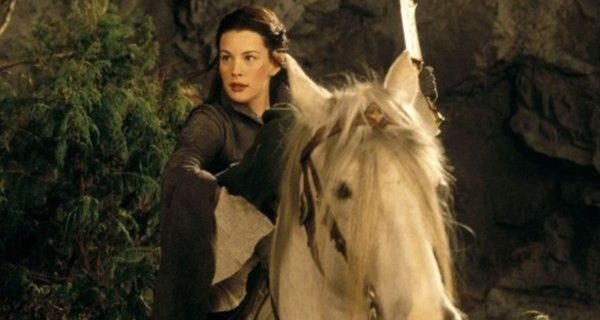The Lord of the Rings is widely regarded as one of the greatest novels of our modern era, but that does not mean it is without detractors. One of the chief claims of the naysayers is a lack of strong female characters within the narrative itself. This is a fairly foolish claim–Tolkien was a man, so it makes sense that the majority of his characters would be male. Writers tend to incorporate what they understand best into their works. But to claim that the women in The Lord of the Rings are not strong shows a rather limited understanding of what makes a woman strong in the first place.
The most obvious example of a strong female character is Lady Eowyn of Rohan. Niece of King Theoden, she is trained in the same warrior ways as her brother Eomer; her skills and courage have earned her the love and admiration of all the people of Rohan. Her position of Shieldmaiden turns out to be crucial in The Return of the King–the Wise foretold that “not by the hand of man” would the Witch King of Angmar, Chief of the Nazgul, be defeated, nor did it transpire that way. He met his fate at the hands of Eowyn, a woman. The outcome of the Battle of the Pelennor Fields might have been considerably different if she hadn’t been there, so right here we have proof of the important role her presence played. Is this not evidence enough of Eowyn as a strong female character?
The strengths of Arwen, Lord Elrond’s daughter, are not quite as obvious in The Lord of the Ringsproper. Although she first appears in The Fellowship of the Ring, she doesn’t actually speak any lines until The Return of the King (possibly because she was a late addition to the story; Tolkien originally planned for an Aragorn/Eowyn relationship). To learn more about her, we must turn to The Tale of Aragorn and Arwen, which is contained in the appendices of The Lord of the Rings. Here we learn more about Arwen–specifically the deep connection she shares with Elrond. If she marries Aragorn, Arwen cannot sail for the Undying Lands with her father when he leaves Middle-Earth; she will never see any of her family again. Compound this with the fifty-some years she had to wait for Aragorn to actually become King of Gondor, and we can see that Arwen is certainly a very strong-willed woman. It took an incredible amount of patience to wait five decades for her fiancé to reclaim his kingdom (Elrond forbade them to marry until Aragorn claimed the kingship of both Gondor and Arnor), but it also required great strength to sacrifice her family and her Elvish birthright of immortality to marry a man whom she would eventually lose to death.
Such strength is obviously hereditary–just look at Arwen’s grandmother, the Lady Galadriel. One of the oldest and wisest Elves in Middle-Earth, Galadriel played a crucial role in forming the White Council and driving Sauron out of Dol Guldur. She was also entrusted with one of the three Elven Rings and used it to protect Lothlorien from Sauron’s ever-growing influence. Even before she possessed her ring, she was one of the most powerful Elves in Middle-Earth and a fearsome adversary. Her strength did not lay in physical achievements but rather in intellectual prowess, and the millennia of her life gave her great insight into how people’s minds worked. There were very few in Middle-Earth who could outwit Galadriel.
Galadriel and Arwen displayed an atypical strength—a strength of the mind, of character. Eowyn also displayed these characteristics in addition to her physical strength. The key point to remember, though, is that they all displayed some form of strength. They were brave when it mattered most and steadfast throughout all of their tasks. These qualities make them admirable role models for all women—just because there are no female ninja warriors in The Lord of the Rings does not mean that the women are simpering and weak. Anyone who has read the book can tell you that Eowyn, Arwen, and Galadriel are a far cry from those adjectives.
